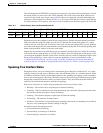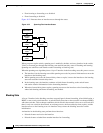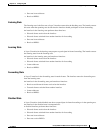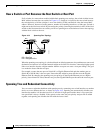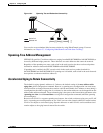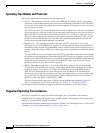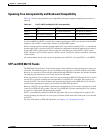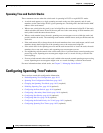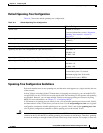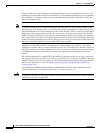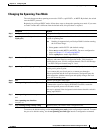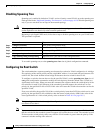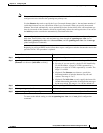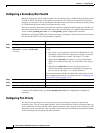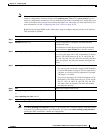
16-12
Catalyst 2960 and 2960-S Switch Software Configuration Guide
OL-8603-09
Chapter 16 Configuring STP
Configuring Spanning-Tree Features
Spanning Tree and Switch Stacks
These statements are true when the switch stack is operating in PVST+ or rapid-PVST+ mode:
• A switch stack appears as a single spanning-tree node to the rest of the network, and all stack
members use the same bridge ID for a given spanning tree. The bridge ID is derived from the MAC
address of the stack master.
• When a new switch joins the stack, it sets its bridge ID to the stack-master bridge ID. If the newly
added switch has the lowest ID and if the root path cost is the same among all stack members, the
newly added switch becomes the stack root.
• When a stack member leaves the stack, spanning-tree reconvergence occurs within the stack (and
possibly outside the stack). The remaining stack member with the lowest stack port ID becomes the
stack root.
• If the stack master fails or leaves the stack, the stack members elect a new stack master, and all stack
members change their bridge IDs of the spanning trees to the new master bridge ID.
• If the switch stack is the spanning-tree root and the stack master fails or leaves the stack, the stack
members elect a new stack master, and a spanning-tree reconvergence occurs.
• If a neighboring switch external to the switch stack fails or is powered down, normal spanning-tree
processing occurs. Spanning-tree reconvergence might occur as a result of losing a switch in the
active topology.
• If a new switch external to the switch stack is added to the network, normal spanning-tree processing
occurs. Spanning-tree reconvergence might occur as a result of adding a switch in the network.
For more information about switch stacks, see Chapter 7, “Managing Switch Stacks.”
Configuring Spanning-Tree Features
These sections contain this configuration information:
• Default Spanning-Tree Configuration, page 16-13
• Spanning-Tree Configuration Guidelines, page 16-13
• Changing the Spanning-Tree Mode, page 16-15 (required)
• Disabling Spanning Tree, page 16-16 (optional)
• Configuring the Root Switch, page 16-16 (optional)
• Configuring a Secondary Root Switch, page 16-18 (optional)
• Configuring Port Priority, page 16-18 (optional)
• Configuring Path Cost, page 16-20 (optional)
• Configuring the Switch Priority of a VLAN, page 16-21 (optional)
• Configuring Spanning-Tree Timers, page 16-22 (optional)




